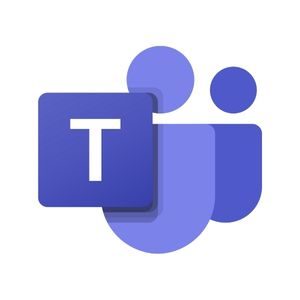-
Video Conferencing Platforms
-
Chat, collaborate, and meet from anywhere in just one place with Microsoft Teams. And it's all free.
-
https://www.microsoft.com/en-us/microsoft-teams/free
With so many of us working online these days, whether we work remotely or not, it is vital to have a web solution for team communication.
If you have been working online for some time, you have probably heard of Microsoft Teams.
One of the many alternatives to Zoom, Microsoft Teams, offers a bevy of features to solve all your online team communication challenges.
As a business development manager for a small business, I know how vital timely communication and collaboration can be to the success of any project.
That’s why I’m here to break down all the features of Microsoft Teams for you.
We’ll discuss what Microsoft Teams can offer by way of communication and collaboration tools for your team, how Microsoft’s pricing structure works, and what other Microsoft Teams users have to say about the product.
Read on and learn more about Microsoft Teams features, pricing, and user reviews.
Microsoft Teams at a Glance
Market Segment: Businesses large and small
Best For: Work departments or teams
Plans & Pricing:
- Microsoft Teams (free): $0, no commitment
- Microsoft Teams Essentials: $4.00 per month, annual subscription
- Microsoft 365 Business Basic: $6.00 per month, annual subscription
- Microsoft 365 Business Standard: $12.50 per month, annual subscription
What Is Microsoft Teams?
Microsoft Teams is a software product, available as an application or through your web browser, that aids work teams in managing communications, collaborating on documents and products, and facilitating online meetings.
What Is Microsoft Teams Used For?
Microsoft Teams helps provide a one-stop-shop for team conversations and collective task completion.
The purpose of Microsoft Teams is to help those who work together connect and keep all communications current, organized, and tracked.
How Microsoft Teams Works
Microsoft Teams works by offering multiple modes of communication for work teams, from synchronous video meetings to live chat to company announcements.
In addition, Microsoft Teams keeps records of these communications, helping teams track and organize conversations around various topics or specifically designated work teams.
With synchronous (in real-time) and asynchronous (at different times) communication and collaboration options, Microsoft Teams allows you to work at your own pace or in real-time with others in a company or work team.
Users can take advantage of the software’s ability to group people into teams, maintain communication channels on specific topics, and coordinate meetings in real-time.
What’s more, Microsoft Teams integrates with many apps, making connecting communications with project progress and advancement on work products easier.
Notable Features of Microsoft Teams
Microsoft Teams has several notable features.
They are:
1. Online Video and Audio Conferencing
Microsoft Teams is one of many video conferencing platforms that allow individuals to connect in real-time for phone or video meetings.
When using video conferencing, users can share screens, interact through chat, provide real-time feedback via reactions, take polls, and collaborate live on documents.
Microsoft Teams can accommodate video and audio meetings of up to 10,000 attendees.
2. Teams and Channels
With Microsoft Teams, users can organize conversations in many ways.
Users can group other individuals into teams.
These might be project-based teams or distinct work departments.
Additionally, users can organize conversations by channel (similar to Slack) around specific topics like a project, upcoming work retreat, or learning collaborative.
Microsoft Teams keeps a record of all communication in teams and channels, making it optimally easy to keep conversations tracked and organized.
3. Chat
Microsoft Teams offers a chat function you can use synchronously or asynchronously.
With chat, users can communicate via text, image, or even gif.
Chat also allows users to react to one another’s messages with a like, love, laugh, surprise, sad, or angry reaction.
Microsoft Teams keeps records of all chats, from in-meeting chats to one-on-one conversations between coworkers.
4. Telephony
This software offers a full suite of telephony services, including live calling, call forwarding, conferencing, and voicemail.
Users who wish to join any meeting may call into the meeting without having to interact with the Microsoft Teams app or web interface, requiring no internet for phone communication.
5. Synchronization With SharePoint and Outlook
If you want to work collaboratively on a SharePoint document or product, you can do so through the Microsoft Teams app.
When coupled with live video conferencing, teammates can work together in real-time as if they are in the same space.
What’s more, Microsoft Teams automatically synchs with your Outlook calendar.
So you can access your calendar through teams or schedule meetings with or without video conferencing right inside the app.
Are There Any Minimum Requirements Necessary To Use Microsoft Teams?
There are several minimum requirements users must meet to use Microsoft Teams.
These differ by the type of device through which you are accessing Teams.
Minimum Requirements for Windows PC
- 1.1 GHz processor or faster
- 4.0 GB of RAM
- 3.0 GB of available hard disk space
- 1024 x 768 screen resolution or higher
- OS of Windows 11, 10, 8.1, Server 2019, Server 2016, or Server 2012 R2
- Standard speakers, microphone, and camera (or USB 2.0 camera or better)
- .NET 4.5 CLR or later
Minimum Requirements for Mac
- Intel Core Duo processor
- 4.0 GB of RAM
- 1.6 GB of available hard disk space
- 1280 x 800 screen resolution or higher
- OS of one of Apple’s three most recent releases
- Built-in speakers, microphone, and camera (or equivalent compatible device)
Minimum Requirements for Mobile Devices
- Any Android device with one of the last four major versions of Android installed
- Any iPhone, iPad, or iPod touch with one of the previous two versions of iOS installed
How Much Does Microsoft Teams Cost?
Microsoft offers various pricing plans allowing you access to Teams, from a free version up to a paid business version.
Microsoft Teams (Free)
This plan allows an unlimited number of one-on-one and group meetings and unlimited chat.
Meeting time is capped at 30 hours for one-on-ones and one hour for group meetings, with up to 100 attendees per group meeting.
Additionally, you get 5 GB of cloud storage, data encryption, live English captions, file sharing, tasks, and polling.
This plan has no annual or monthly cost.
Microsoft Teams Essentials
With this plan, you get everything in the free package and increased group meeting time up to 30 hours, increased meeting attendance to up to 300 participants, increased cloud storage up to 10 GB, and 24/7 web and phone support.
This plan costs $4.00 per month and requires an annual subscription.
Microsoft 365 Business Basic
When you upgrade to this business plan, you get everything in the Essentials plan plus.
You also get additional collaboration features like whiteboard and annotations, integration with hundreds of apps, live captions in up to 30 languages, meeting recordings and transcripts, mobile and web versions of Microsoft Office applications, increased cloud storage up to 1 TB per user, business email, and standard security.
This plan will run you $6.00 per user per month with a required annual subscription, although a 1-month free trial is available.
Microsoft 365 Business Standard
At the highest level, Microsoft Teams offers everything in the Business Basic plan and the ability to host webinars (including webinar reporting and registration), manage customer appointments, and access Office apps with premium features through your desktop.
This plan also offers a free one-month trial, after which your bill will be $12.50 per user per month.
Microsoft Teams Promotions & Savings
Here are a few of the promotions and savings you can get for Microsoft Teams.
Does Microsoft Teams Have a Free Trial?
As discussed, you can get a Microsoft Teams free trial by subscribing for one month to the Business Basic or Business Standard plan.
After you’ve completed your free trial, you might be interested in coupons or discounts for continuing to use Microsoft Teams.
Does Microsoft Teams Offer Coupon Codes?
Occasionally, Microsoft offers a discount for Teams access.
However, this changes over time.
If you’re interested in identifying a current deal for Microsoft Teams, check out coupon code websites or apps like Honey, CapitalOne Shopping, or Retail-Me-Not.
Does Microsoft Teams Have a Lifetime Deal?
Microsoft offers plans by the year.
However, you can purchase lifetime usage of Microsoft Teams if you opt into one of Microsoft’s software packages.
Microsoft offers lifetime packages for home and business, professional, home and student, and personal usage.
Does Microsoft Teams Usually Offer Black Friday or Cyber Monday Discounts?
While no current Black Friday or Cyber Monday deals exist for Microsoft Teams, it’s a good idea to check these apps and sites as the holidays approach to see if you can find a coupon or discount code for the product.
Who Are Microsoft Teams’ Main Alternatives?
Microsoft Teams isn’t the only meeting management software on the market.
So let’s consider how Microsoft Teams stacks up against the alternatives.
1. Zoom
While Zoom has many meeting features similar to Microsoft Teams, like chat, screen sharing, and real-time captions, Microsoft Teams beats Zoom in its ability to foster collaboration and track communication.
Zoom is primarily a video conferencing platform, while Microsoft Teams offers much more for cooperative task completion and communication management.
2. Google Meet
Like Zoom, Google Meet is mainly a platform for chatting and video calling, either one-on-one or in groups of up to 100.
On the other hand, Microsoft Teams functions primarily as a collaboration and communication tracking tool with a video conferencing feature.
3. Twitch
Unlike Microsoft Teams, Twitch is a streaming service used mostly by video gamers and pop culture streamers.
So if you’re looking to live stream content, Twitch is the place for you.
If, however, you’re looking to collaborate with your work team, opt for Microsoft Teams.
How Does Microsoft Teams Differentiate Itself From Competitors?
Microsoft Teams stands out among video calling and streaming services for its ability to foster collaborative work and project management and organize and manage communications between coworkers.
Who Is Microsoft Teams Best For?
Based on its design and features, Microsoft Teams is best for smaller teams completing project-based work.
While larger groups and companies can use many of Microsoft Teams’ features effectively and efficiently, users will get the most from these features when completing project-based work in a smaller group.
Why Is Microsoft Teams Best for Smaller Teams?
The organization of teams and channels, communication tracking features, integration with project management apps, and collaborative document creation and editing make Microsoft Teams ideal for this group.
Is Microsoft Teams Easy to Use?
Those already familiar with Microsoft Office Applications will likely find Microsoft Teams very easy to use.
Teams should prove pretty intuitive if you are accustomed to the layout, nomenclature, and organization of Microsoft apps.
What Features Do Some Users Love?
Many users love Microsoft Teams’ chat communication tracking and organization features.
When every chat conversation saves according to its team, channel, or meeting, you no longer need to worry about losing track of tasks or vital information discussed with teammates.
Many users also love Microsoft Teams’ ability to integrate with several other applications.
Microsoft Teams integrations include Power BI, YouTube, Trello, and Monday.com, among others.
What Features Do Some Users Find Frustrating?
While Microsoft Teams is a reasonably effective tool for video conferencing, sometimes the application can lag, and users can experience connectivity problems during meetings.
When an internet connection is a little slow or unstable, users sometimes must turn off the video and use audio conferencing only to communicate.
Another feature some users find frustrating is toggling between accounts on Teams.
While you can toggle between accounts on Teams if you have more than one Microsoft account, it’s not always clear which account you’re accessing Teams through, and sometimes the toggle feature doesn’t work when you click into another account.
Frequently Asked Questions
Now that we’ve discussed the features, pricing, and pros and cons of Microsoft Teams, let’s sort through some of the most common questions Teams users have.
Can I join a Teams meeting without an account?
Yes, any internet user can join a Teams meeting as a guest, even if they do not have a Microsoft account.
If invited to a Teams meeting, click the hyperlink inside the invite to join, and you will enter the meeting under guest mode.
Is Microsoft Teams better than Zoom?
The answer to this question depends on what you want to do with the applications.
For example, Zoom may be better if you’re looking for a high-quality, synchronous video conferencing or webinar platform.
If you want access to collaborative work, communication management through teams and channels, and more asynchronous communication options, Microsoft Teams is likely the better application.
Wrapping Up
Microsoft Teams is an excellent application for communicating and collaborating with members of your work team.
As a business development manager, I have used Teams extensively and found its features to be highly effective at managing communications, fostering collaborative work, and ensuring work teams can move projects forward.
With Microsoft Teams, you will get a comprehensive work application chock full of features that will keep your team informed, active, and connected.
Have more thoughts on Microsoft Teams?
Leave a review in the review section below.




